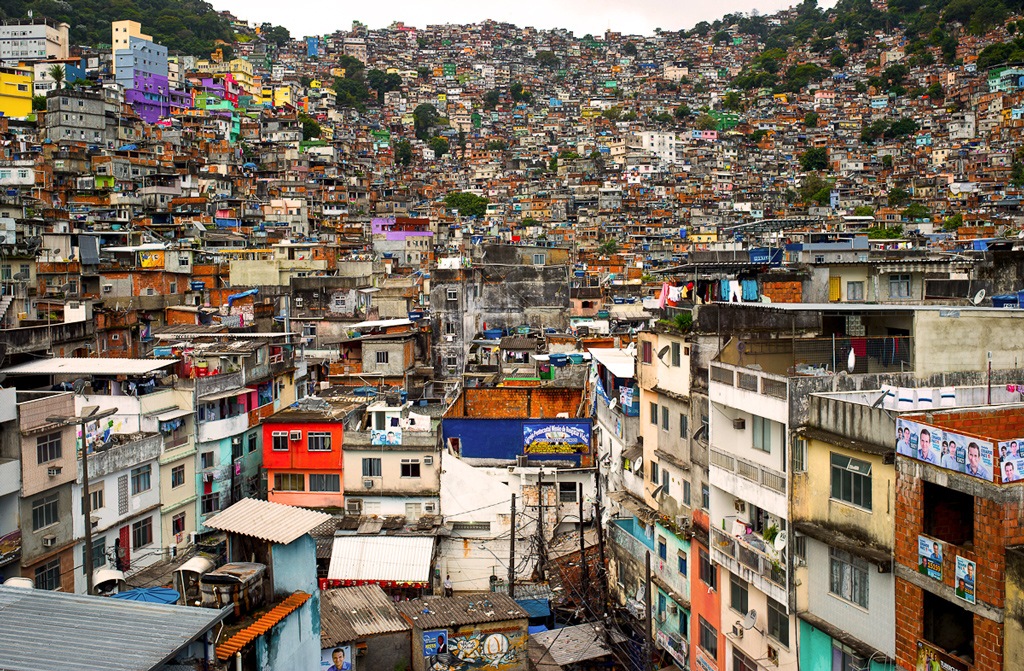RIO DE JANEIRO, BRAZIL – Amid the novel coronavirus pandemic, Brazil has 5,127,747 households in “subnormal agglomerates” – a technical term covering communities widely known as favelas – scattered over 734 municipalities. Two-thirds of them are two kilometers or less away from a health care facility, according to a release on Tuesday, May 19th, by the IBGE (Brazilian Institute of Geography and Statistics).

In total, the country has 13,151 subnormal agglomerates, which are called by many different names, according to the region of Brazil where they are located: ‘favela’, ‘invasão’, ‘grota’, ‘baixada’, ‘comunidade’, ‘mocambo’, ‘palafita’, ‘loteamento’, ‘ressaca’, and ‘vila’ are all in common use.
IBGE classified the subnormal agglomerates as forms of irregular occupation of land – either public or private – owned by a third party, for housing purposes in urban areas, usually characterized by an irregular urban pattern, with scarce essential public services and located in areas not proper or allowed for housing use. In these areas, populations with more precarious socioeconomic, sanitation, and housing conditions usually live.
Many of them have small dwellings very close to one another, which makes social isolation difficult and may ease the spread of Covid-19. According to IBGE, the release is anticipation of results, which aims to provide society with data to fight the novel coronavirus pandemic.
The numbers released were collected in preparation for the 2020 Demographic Census, which was recently deferred to next year because of the pandemic, in addition to mapping data from the National Registry of Health Care Facilities.
In the 2010 Census, Brazil counted 6,329 favelas, with 3,224,529 occupied households, spread over 323 municipalities. According to IBGE, the numbers cannot be compared with this Tuesday’s report, which is an estimate for the operation of the 2020 Census and is only being released to address the pandemic.
The epicenter of the disease in Brazil, the city of São Paulo, also leads the statistics on the number of households in favela communities — 529,921, according to the IBGE.
The favela of Paraisópolis is one of the largest in Brazil, with 19,262 homes. By Monday, the capital of São Paulo recorded 39,163 cases of Covid-19, with 2,884 deaths. The state of São Paulo also accounts for the largest concentration of homes in favelas in Brazil. There are 1,066,813 homes. In total, the region recorded 62,066 confirmed cases of the novel coronavirus, with 4,823 deaths by Monday.
Another location with a high number of deaths is Rio de Janeiro, which according to the IBGE, ranks second in absolute numbers of subnormal agglomerates. The capital counts 453,571 such households, while the whole state counts 716,326. Rocinha, in Rio de Janeiro, is the favela with the highest total number of homes, 25,742.
Last week, the 29 confirmed Covid-19 deaths in the area up to May 8th exceeded the general monthly average of deaths in the past four years (25). The number, collected by local doctors, is twice as high as recorded in the official city hall dashboard (14).
According to family doctors, community workers and residents of different favelas in Rio de Janeiro, there is tremendous underreporting in these locations, as evidenced by data such as an increase in ambulance calls during the pandemic, in addition to discharges in the case of severe acute respiratory syndromes and surveys of local cases.
Despite the large number of subnormal agglomerates, the proportion in relation to the overall population of São Paulo and Rio de Janeiro is lower than in other places: Rio stands at 12.63 percent, compared to 7.09 percent in São Paulo.
Amazonas is the leading state in this respect, with 34.6 percent of its populace now living in favelas. In the state, Covid-19 had passed the 20,000-infected mark over the weekend, with more than 1,400 deaths. The capital Manaus counts the highest proportion of favela households among all state capitals, with 53.4 percent.
Last week there was an increase in the number of burials in Manaus. On Monday, May 11th, there were 99 burials in the city’s public cemeteries, against an average of 28 last year. The local health system has collapsed during the pandemic.
Source: Folhapress

